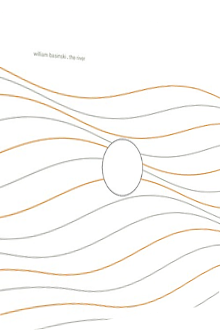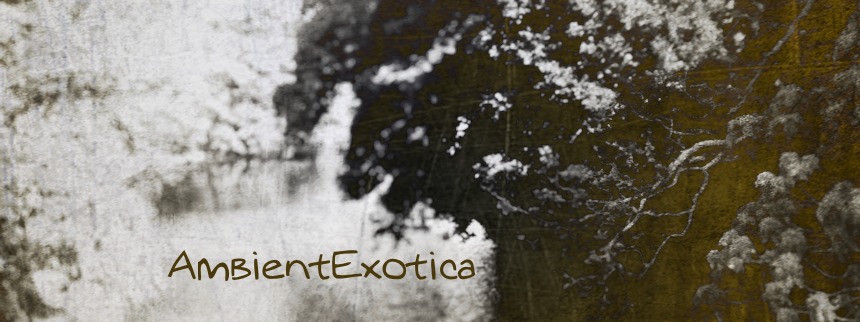
William Basinski
The River
1983/2002
Houston-born Avantgarde musician William Basinski's (1958) career launched in 1998, but way before that year, he created shedloads of tape-based music all for himself. It was only in this millennium that he opened his huge archive for the public, with many of his 40+ minutes or even hour-long tracks being released on the labels Raster-Noton or his own 2062. The River, released in 2002 on the former, was created in 1983 already and consists entirely of looped and overlaid tapes, static noise of the gentle kind and slowed down textures taken from various ephemeral music stations. This setting is accompanied live by contingent AM noises coming out of the radio, thus adding an incidental element that is completely out of Basinski's control. The suite comprises of just two untitled tracks spanned on two CD's, each of them almost crossing the 47-minute mark. Why is the album relevant? Because. It. Does. Not. Sound. Dated! And more importantly: it scares the living daylights out of the listeners, though this very fact is curiously neglected or even unmentioned in many a review you'll encounter on the net. The River and his other aquatic arrangements and setups are more prophetic and foreshadowing than ever, for back in the 80's, the talented producer already captured the nucleic matrix of the Drone and the Dark Ambient genre. The soundscapes he comes up with are magnificently mystical as well as ubiquitously dusky, but hateful figments are ejected from every fissure of the multilayered drones, and true happiness is farther away than ever as the listener is washed away by the titular river into worlds of darkness and horror.
The first untitled track floats for about 46 minutes and 50 seconds. Croaking crickets, Microhouse-evoking clicks and crackles in hindsight as well as a distant lawnmower are altogether juxtaposed to terrifying synth drones – Ennio Morricone's Theme From The Thing of 1982 comes to mind – and spectrally crystalline breezes of iciness which inherit both a meandering majesty and intimidating harshness. Additional analogue synth stabs shatter in the background, and their textural traits are deep and scary. Around the nine-minute mark, a moon-lit haze is starting to thicken, with cacophonous glints being added to the aforementioned breeze. In the 13th (!) minute, machine-like drones of a metallic origin are bursting for the first time, and chopped staccato wind gusts sound like the manic laughter of undead figments. You need a monocle to spot any trace of warmth. Another noteworthy incident happens after 21 minutes, as a flock of birds flies over the river; or is it? Yet again are there warbled traces of humanity found in them, but they are stripped off any warmth and soul. It's only voices from a radio program, but so utterly eerie and menacing that it's a nerve-racking situation. The bile of the static noise transmissions increases over time, and whenever these noises appear, they are mean-spirited and blood-curdling. During all these river-crossed miles, the bass drones add depth, plasticity and a forceful stream of mystique to the mix. The first CD ends on a subtle note as the song fades out. But throughout its runtime, the first untitled track never gets boring, as the clicks and particles mesh and depart in entirely different ways. It is one of the greatest Dark Ambient tracks ever created, boosting the uneasiness to levels of panic. No cheap shocker is involved, there's no sudden outburst or piercing scream, just the river gurgling along through the foggy night.
CD 2 is much more aquatic and deep, getting rid of its claws and hazardous aura in favor of a soothing coldness that is distantly related to many synth stabs of the Detroit or Deep House genre, but of course gentler, flowing along in a graceful solemnity. This is apparent from the first minute already. Sure enough does the warbled, time-stretched five-note scheme inject a similar fear than the untitled track on CD 1, but the vault-like bass drones are much more present, as is the sound of an interwoven shop horn! The crickets are croaking much louder, and white molecules dribble onto the deep synth structures. This liveliness is slowly waning in the seventh minute, letting the repetitive lawnmower-like ship horn shine in blood-red colors. It is shortly before the tenth minute that something magical happens, as celestial, down-pitched orchestra strings are taking over the track, providing first glimpses of golden shimmers, contentment and hymnic grace. These strings are very echoey, their reverb whirrs into the darkness; I cannot help myself but thinking about the whale song synth strings of Pop Ambient musician Ulf Lohmann whose textures are of similar quality, but only created from 2001 onwards. As the strings fade out, the spine-tingling ship horn strikes back with full force and as baleful as ever. A new element is introduced after 20 minutes yet again, but it comprises of cloudy metallic clangs… not exactly a joy-enhancing pattern. Together with the ship horn, it is controlling the scenery for several minutes before it is exchanged in the thirtieth minute with an unexpectedly humanoid trace in form of a female opera singer. Her voice, however, is heavily filtered and pitched, minimizing the entrancing effect of her voice by making it zombie-like. The remaining ten minutes present sine waves, static noise cascades and oscillating transmission signals, as the ship horn, the glittering cricket sounds and the soul-crushing gelid five-note theme fade out, leaving the gurgling sounds of fake water. The end point of The River is reached.
Fans of Svarte Greiner, Francisco López and other Dark Ambient forerunners watch out! William Basinski's crestfallen river of enigmatic uncertainty and crushing terror is flowing since 1983, but only recently has this lost site been found by the people at Raster-Noton who allow visitors to enter at their own risk. And the risk is heavy, destroying anyone's good mood within seconds. The nocturnal darkness that The River depicts is awe-inspiring, the many traces of formerly human voices add tremendous value to the arrangement, and the static noise atoms are an often-used element of danger and coldness in both music and Horror movies or games, but it is Basinski who relied on their threatening power, making The River a hallmark of the Dark Ambient genre. Metallic clangs, ship horns rang by undead sailors (it must be a very large river), celestial violins which actually fuel the fear, and finally the rotten scent of lawnmower waves altogether unleash the darkest playground for transcending spirits of the evil kind. I'm not kidding: this album is heavy to digest but easy to enjoy for fans of dark music. It doesn't sound dated; in fact, it secretly led the way to a genre which is now well-established in the Ambient scene. One of the darkest 90 minutes that William Basinski has to offer, a hallmark of the Ambient genre, and naturally included in the latest box set of the artist's complete works. It's the soundtrack to an unwritten John Carpenter movie, and I recommend it wholeheartedly to every Ambient listener who wants to bathe in fear. Listen to it at night and see what happens. It will probably be all those things that other reviewers didn't mention… and more. Sweet dreams.
Ambient Review 114: William Basinski – The River (1983). Originally published on Aug. 29, 2012 at AmbientExotica.com.
